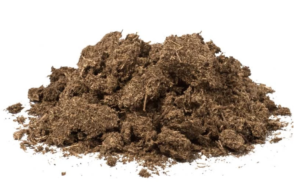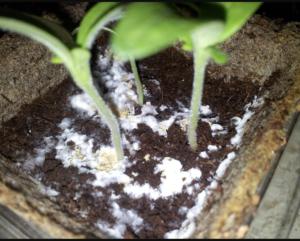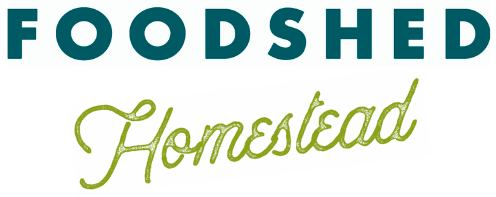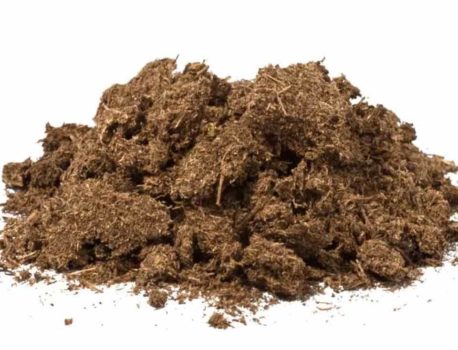Potting mix for seed starting can be a tricky topic. Many people don’t want to shell out the cash for high quality seed starter mix but I can tell you this is possibly the most important investment you’ll make for your plants. If you’re looking to save some pennies, make a large quantity of mix, or simply want the experience of making some DIY potting soil, here are some things you should consider.
First off, do not use soil from the garden!
I often see that beginners are tempted to take soil from the garden since it’s free and has everything that plants need to grow out in the world. However, because you’re altering the growing environment by putting seedlings in small containers indoors, certain adjustments need to be made.
Soil from the outdoors can often be too dense and become easily saturated with water. It also has fungal and bacterial pathogens that are often balanced by beneficial microbes and environmental factors when outside. When trapped in a warm, moist environment indoors, pathogens tend to thrive and baby plants often aren’t strong enough to stand a chance.
Components of Potting Mix
Peat Moss or Coconut Coir for Structure – 50% of your media

Peat moss or coconut coir makes up the bulk of most potting mixes. It doesn’t have nutrients itself but it does have nutrient and water holding capacity. You’ll want to make sure you get peat moss with a wetting agent included (I grow organically so I look for yucca or other plant-based wetting agents… some mixes contain synthetic agents which I try to steer clear of). Peat moss also tends to be quite acidic so a liming agent to bring the pH up to a more neutral state is best for seedlings.
Perlite for Air Space – 25%
Those little white balls that you find in store bought potting mix are called perlite, a naturally occurring mineral made of exploded volcanic ash (think volcano popcorn!) These provide little pockets of air that keep your plants from drowning.
Believe it or not, roots need air to grow so maintaining air in your potting soil is key for good root establishment. Outside we have naturally occurring minerals/rocks/woody particles plus things like worms and other critters that create airspace in soil. Perlite is how to do this in containers.
Compost for Nutrients – 25%
I prefer to use compost for the bulk of the nutrients in my potting mix. Most stable, finished compost has all the nutrients your baby plants need until they’re ready to be planted. Some plants that take longer to grow and may need some supplemental nutrients and/or to be potted up into new soil while growing as transplants. You can gain some insight into which plants this includes in the seeding schedule post.
Many store bought mixes include blood/bone meal which has a lot of nitrogen plus other minerals for plant growth. If you have a good source of high quality compost you should be good to go for plants that take 30 days or less to grow. Otherwise you may want to consider adding a slow release form of nitrogen like worm castings as a supplemental fertilizer or potting up.
Other Considerations
Potential Pathogens
I know I mentioned this above but it bears repeating. Putting soil from your garden in your potting mix in large quantities is a recipe for unwanted pathogen battles.

Play it safe and only use verystable compost that is finished “cooking.” (If it’s not it can literally burn your plants, tie up nutrients, or even decompose your seeds.)
I prefer to either use very aged compost or purchase it bagged from a professional. Often the compost you can get in bulk from landscaping centers is NOT finished and is made mostly of leaf mold. While this is suitable for putting in your garden it is not stable or nutrient dense enough for seedlings.
There is No Need Sterilize Your Soil
Another thing I see quite a bit on gardening forums is people recommending that others bake or bleach their soil in order to sterilize it for us. There is no way to truly sterilize soil/compost without killing all of the things that make it beneficial. It’s best to use the ingredients listed above which are a combination of non-living (peat moss/coconut coir, perlite) and stable but very much alive components (compost).
Moisture Level
You’ll also want to make sure not to overwater as this can lead to fungal overgrowth in even balanced/healthy potting mix. You can set your plants up for success by having the right balance of materials in your potting mix as well as having plenty of airflow around your plants.
Resources
If making your own mix sounds like too much work (and for me, it is) you should consider buying high quality media. I’m lucky to live in Michigan where I have access to Morgan’s Composting products, including their 201 Potting Soil. (They bill 101 seed starter as best for seedlings but I find that the nutrient mix in 201 gets most of my plants through the entire transplant lifecycle.)

Potting soil is heavy so ordering online might not be the wisest choice. Head to your local garden center or hydro store (that typically caters to cannabis growers) and be sure to check out the ingredients list on the media bags. You’ll want to make sure you’re getting something suited for growing veggies, NOT house plants (it doesn’t have enough/the right kinds of nutrients.) Happy Frog is a good brand that is relatively widely available at most grow shops.
I don’t typically recommend Miracle Gro for a number of reasons but their Nature’s Care Organic Garden Soil does tend to be on the more affordable side and is widely available at most hardware stores and garden centers.
For more insight into growing great transplants, consult the Seed Starting 101 post.


